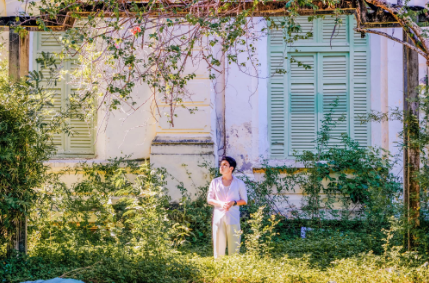
Tien Giang’s ancient houses with historical and cultural significance
Although Tien Giang is a small province, it has many natural and cultural attractions that draw tourists.
Even for those who have traveled to the West, the Tien Giang travel journey to discover ancient houses familiar to indigenous people will be extremely new. Visitors will feel as if they have revisited a time that they have only heard about briefly in history books, enjoying many details that no one has told or told them.
The House of Doc Phu Hai (Đốc Phủ Hải)
Address: 49 Hai Ba Trung, Ward 1, Go Cong Town, Tien Giang Province.
The Governor's House of Hai has both modern French architecture and ancient feudal times because it contains many stories about the great god Pham Dang Hung (Phạm Đăng Hưng) in the Royal Tomb a few kilometers away, Empress Dowager Tu Du (Từ Dũ) of the Hue court, and the leader of the rebels, national hero Truong Dinh (Trương Định). The exterior is built in Roman style, while the interior is mostly made of exquisitely sculpted ebony and meticulously written in Confucian script. The house contains over 350 decorative sea molds, grand letters, mother-of-pearl mosaics, and 70 artifacts. Visitors come to experience what a feudal landlord's regal life is like. Ms. Tran Thi Sanh (Trần Thị Sanh), the daughter of ba ho (bá hộ) Tran Van Do (Trần Văn Đổ) and Pham Thi Phung (Phạm Thị Phụng), lives in this house. Ms. Phung is the sister of Empress Dowager Tu Du's cousin, Ambassador Pham Dang Hung. Ms. Tran Thi Sanh (wife of national hero Truong Dinh) left the house to her stepson Duong Thi Huong (Dương Thị Hương) and son-in-law tri huyen (tri huyện) Truong Binh when she entered the temple to seek refuge, so this location is often referred to as Ba Huyen's (Bà Huyện) House.
Ms. Tran Thi Sanh (Trần Thị Sanh), the daughter of ba ho (bá hộ) Tran Van Do (Trần Văn Đổ) and Pham Thi Phung (Phạm Thị Phụng), lives in this house. Ms. Phung is the sister of Empress Dowager Tu Du's cousin, Ambassador Pham Dang Hung. Ms. Tran Thi Sanh (wife of national hero Truong Dinh) left the house to her stepson Duong Thi Huong (Dương Thị Hương) and son-in-law tri huyen (tri huyện) Truong Binh when she entered the temple to seek refuge, so this location is often referred to as Ba Huyen's (Bà Huyện) House.
This is one of three famous relics to visit: the Royal Mausoleum, the Truong Dinh tomb and temple, and the Doc Phu Hai (Đốc Phủ Hải) building.
Go Cong Governor’s Palace
Address: Located on Nguyen Van Con Street, Ward 2, Go Cong Town, Tien Giang Province.
If the Hai governor's house is the largest residence, the Go Cong governor's palace is the largest public office. The governor's mansion is a two-story house with a total area of 1400m2 on a large campus with many trees.
 This is one of three famous relics to visit: the Royal Mausoleum, the Truong Dinh tomb and temple, and the Doc Phu Hai building.
This is one of three famous relics to visit: the Royal Mausoleum, the Truong Dinh tomb and temple, and the Doc Phu Hai building.
Go Cong (Gò Công) Governor's Palace
Address: Located on Nguyen Van Con Street, Ward 2, Go Cong Town, Tien Giang Province.
If the Hai governor's house is the largest residence, the Go Cong governor's palace is the largest public office. The governor's mansion is a two-story house with a total area of 1400m2 on a large campus with many trees. The French built this structure in 1885 with a nearly 0.5m thick wall. The building has recently gained popularity and is now frequented by both local youth and tourists.
The French built this structure in 1885 with a nearly 0.5m thick wall. The building has recently gained popularity and is now frequented by both local youth and tourists.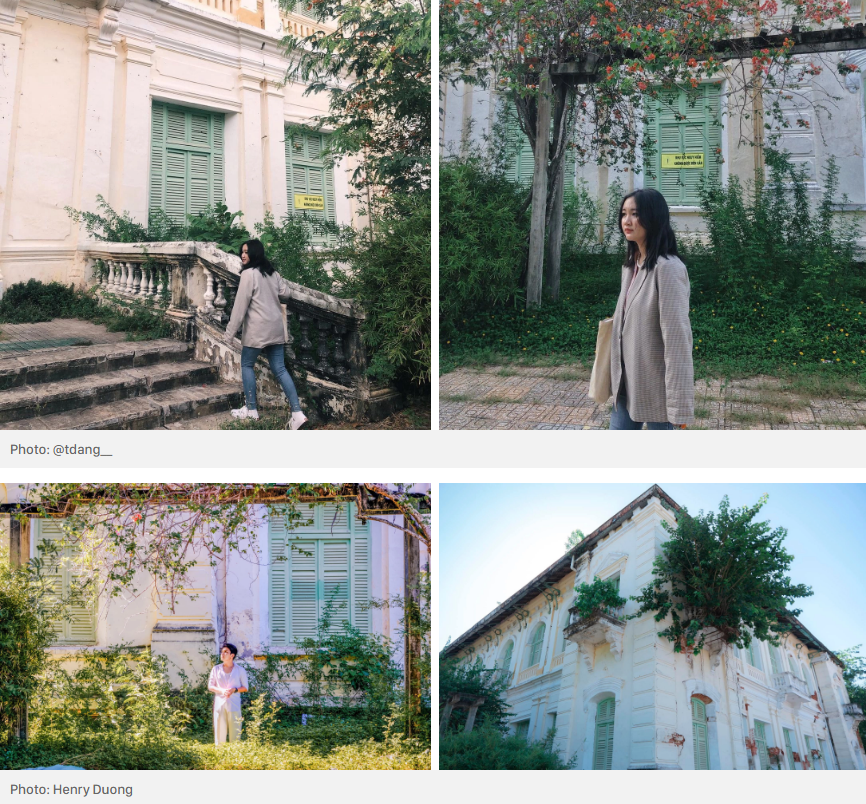 Bach Cong Tu (Bạch Công Tử) House
Bach Cong Tu (Bạch Công Tử) House
Address: 62 Dinh Bo Linh, Ward 3, My Tho City, Tien Giang Province. Bach Cong Tu (Bạch Công Tử) Le Cong Phuoc (Lê Công Phước) House was built between 1925 and 1926 on a land area of more than 4,000 m2. Mr. Le Cong Phuoc was born in the early twentieth century when he was known as the "king of play." His relaxed appearance, fair complexion, cavalier demeanor, and arrogance but poise earned him the moniker "Bạch Công Tử." Simultaneously, to distinguish himself from another notoriously wealthy individual, "Hắc Công Tử" Tran Trinh Huy (Trần Trinh Huy (Công Tử Bạc Liêu).
Bach Cong Tu (Bạch Công Tử) Le Cong Phuoc (Lê Công Phước) House was built between 1925 and 1926 on a land area of more than 4,000 m2. Mr. Le Cong Phuoc was born in the early twentieth century when he was known as the "king of play." His relaxed appearance, fair complexion, cavalier demeanor, and arrogance but poise earned him the moniker "Bạch Công Tử." Simultaneously, to distinguish himself from another notoriously wealthy individual, "Hắc Công Tử" Tran Trinh Huy (Trần Trinh Huy (Công Tử Bạc Liêu). His house has "sticky" Western architecture as a result of a study abroad period in France. The entire truss system is made of precious wood, and the house has up to eight fish-scale tile roofs. The walls are 20 cm thick, and the foundation is made of card tiles, leather stone cladding, and encaustic tiles. Dragons, phoenixes, birds, animals, and flowers are embossed and intricately carved on the main door arches and the door arches on both sides.
His house has "sticky" Western architecture as a result of a study abroad period in France. The entire truss system is made of precious wood, and the house has up to eight fish-scale tile roofs. The walls are 20 cm thick, and the foundation is made of card tiles, leather stone cladding, and encaustic tiles. Dragons, phoenixes, birds, animals, and flowers are embossed and intricately carved on the main door arches and the door arches on both sides.
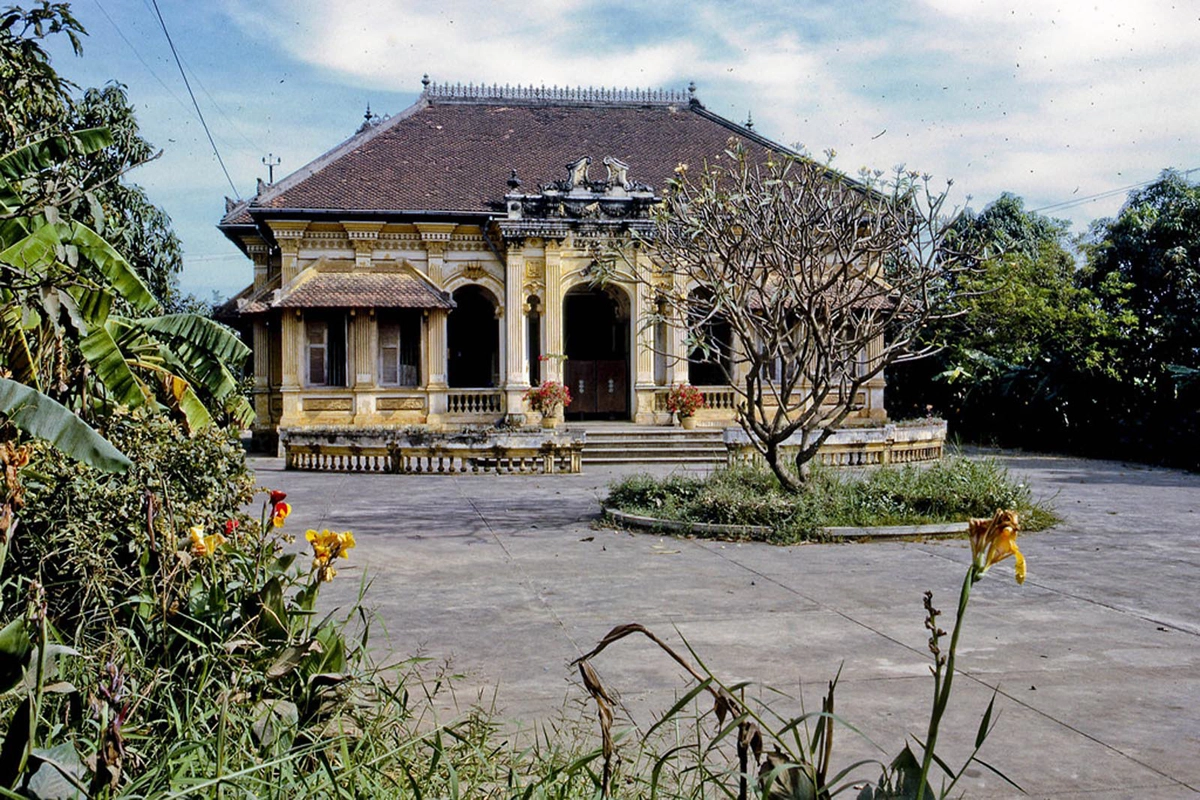
The Bach Cong Tu’s House in the past - Image:thamhiemmekong
Mr. Le Cong Phuoc used to set up a salary reform burden for both business and fame, but he eventually lost money. He was so desperate that he had to sell his property, then his house, eventually succumbing to addiction and dying. He was buried on the land that had once been his when he died. Nobody expected the region's richest man to die with nothing in his hands, and the grave was also cultivated with temporary land.
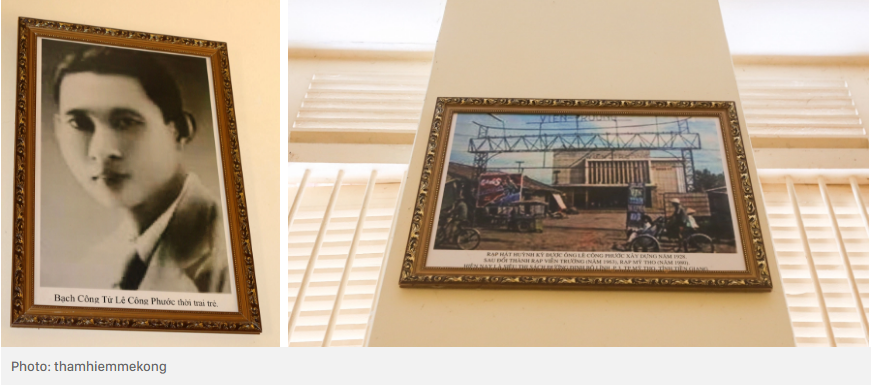 Later, when the Bach Cong Tu house was designated as a provincial historical-cultural relic, it was restored with objects such as tables and chairs, chandeliers, discographies, and miniatures,... and more trees were planted to give it a "luxurious" appearance at the start. The house is nearly a century old, but it still has the architectural beauty of the old wealthy class. This location is regarded as one of the oldest tourist attractions.
Later, when the Bach Cong Tu house was designated as a provincial historical-cultural relic, it was restored with objects such as tables and chairs, chandeliers, discographies, and miniatures,... and more trees were planted to give it a "luxurious" appearance at the start. The house is nearly a century old, but it still has the architectural beauty of the old wealthy class. This location is regarded as one of the oldest tourist attractions.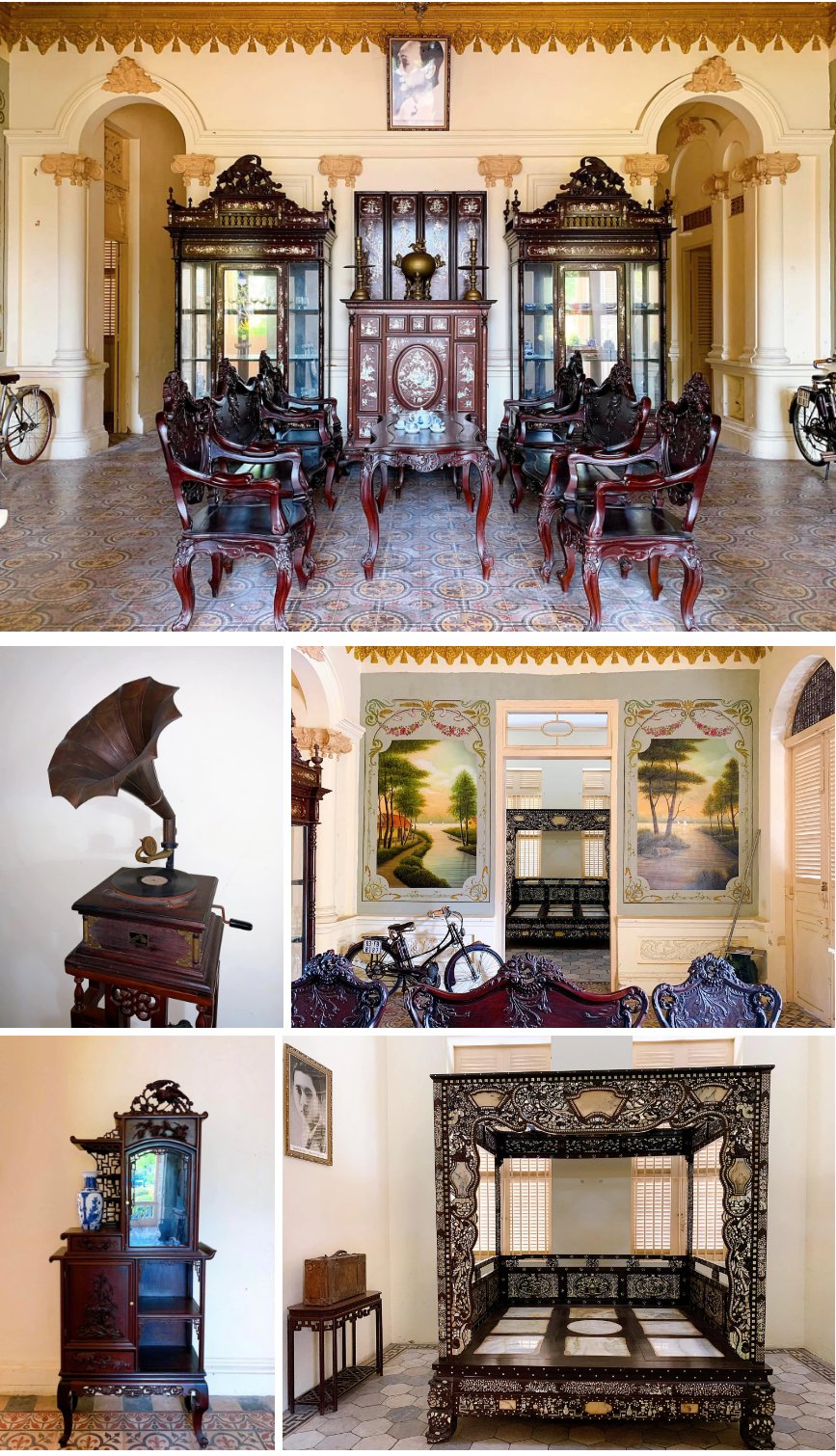 Royal Tomb of Go Cong
Royal Tomb of Go Cong
Address: Located in Giong Son Quy (Giồng Sơn Quy) (Gò Rùa), today in Hoang Gia hamlet, Long Hung commune, Go Cong town, Tien Giang province.
This is the Pham Dang (Phạm Đăng) family's place of worship and tomb, whose grandfather Pham Dang Hung (Phạm Đăng Hưng) is the grandfather of King Tu Duc (Tự Đức), a relative of Queen Dowager Tu Du (Từ Dũ), wife of King Thieu Tri (Thiệu Trị).
 The entrance gate is built in a stylized triangular style, with a roof of borage tiles and a top carved with the image of a "moon carp" (carp looking at the moon) representing the owner's elegance. The mausoleum's unique feature is that it is entirely made of wood, with no nails used to connect wooden slats, trusses, or columns, but instead is chiseled together correctly.
The entrance gate is built in a stylized triangular style, with a roof of borage tiles and a top carved with the image of a "moon carp" (carp looking at the moon) representing the owner's elegance. The mausoleum's unique feature is that it is entirely made of wood, with no nails used to connect wooden slats, trusses, or columns, but instead is chiseled together correctly.
 Dong Hoa Hiep Ancient Village
Dong Hoa Hiep Ancient Village
Address: Located in Dong Hoa Hiep commune, Cai Be district, Tien Giang province located in the lower Mekong River.
The Nguyen dynasty established a new unit, Long Ho Palace, in the eighteenth century, in 1732, and chose An Binh Dong village in present-day Dong Hoa Hiep commune as its capital. Dong Hoa Hiep village attracted many officials and wealthy landowners during its 25-year tenure as the seat of Long Ho Palace (1732-1757). As a result, the houses are constructed of precious wood with tile roofs, both tall and wide, in accordance with Eastern and Western architecture. The house is in an ideal location: next to the river, there is an orchard... so this village has a very distinctive appearance. These ancient gardeners have existed for over 150 years and are connected within a 2km radius, allowing visitors to walk around the village. Dong Hoa Hiep ancient village has seven hamlets and nearly 4,000 households, as well as trading orchards such as sand mango, gourmet orange, green grapefruit, longan, milk breast... and traditional crafts such as nuggets village, rice paper coating, milk cracker rolling...
These ancient gardeners have existed for over 150 years and are connected within a 2km radius, allowing visitors to walk around the village. Dong Hoa Hiep ancient village has seven hamlets and nearly 4,000 households, as well as trading orchards such as sand mango, gourmet orange, green grapefruit, longan, milk breast... and traditional crafts such as nuggets village, rice paper coating, milk cracker rolling...
Source: Giang Ý